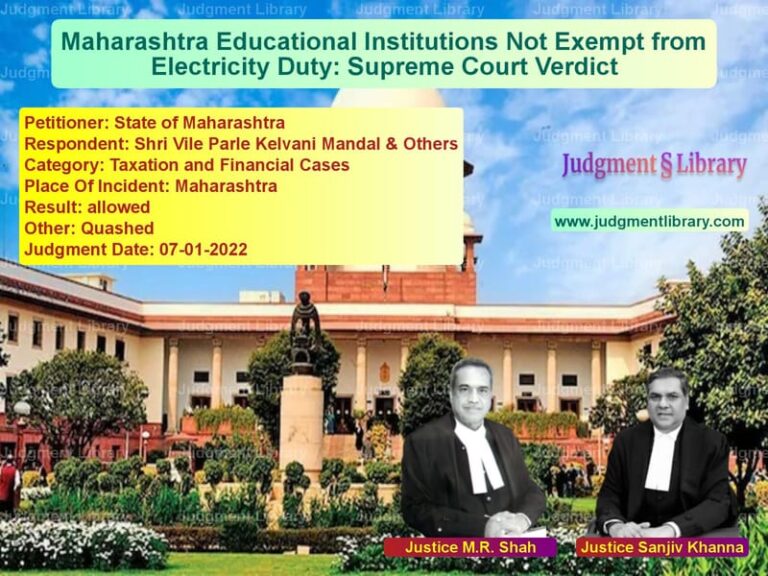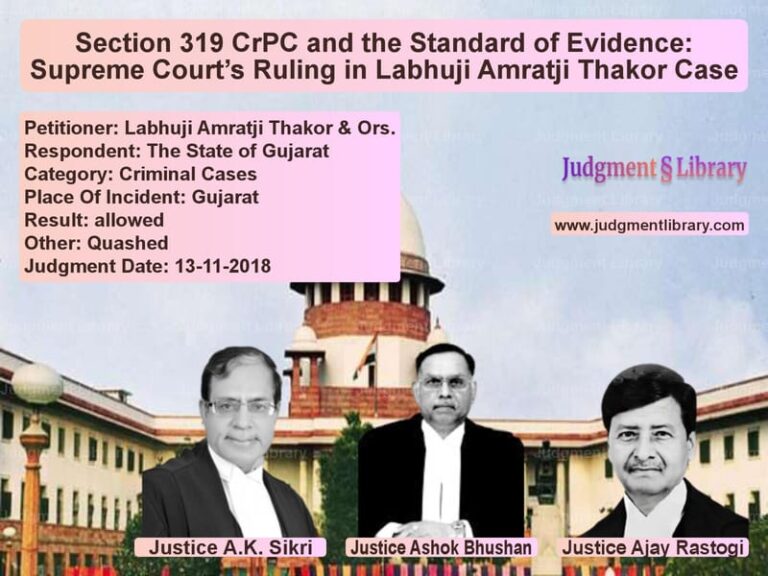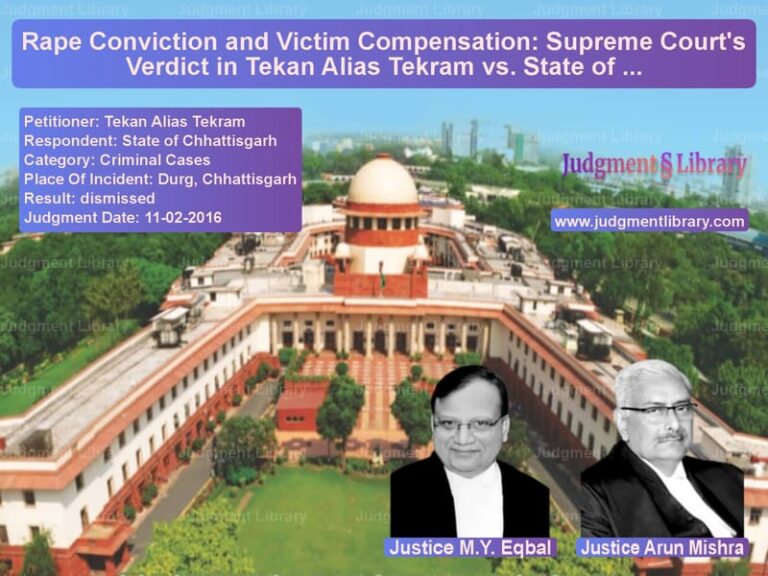Delhi Millennium Bus Depot Case: Supreme Court Grants Final Extension for Relocation
The case of Govt. of NCT of Delhi and Anr. vs. Anand Arya and Ors. revolves around the dispute regarding the construction and continued operation of the Millennium Bus Depot on the Yamuna River floodplain. The Supreme Court addressed whether the depot could remain at its current location despite environmental concerns.
Background of the Case
The Millennium Bus Depot was constructed in 2010 by the Delhi Transport Corporation (DTC) on land situated next to the Nizamuddin Bridge and behind the I.P. Power Station. The depot was initially planned as a temporary facility for the Commonwealth Games 2010, but the government later sought to retain it permanently.
A Public Interest Litigation (PIL) was filed by respondents challenging the depot’s construction on environmental grounds. The High Court of Delhi ruled that the construction was unauthorized under Master Plan 2021 (MPD-2021), which classified the area as ‘River Flood Plain’, where no permanent construction could take place.
Petitioner’s (Govt. of NCT of Delhi and DTC) Arguments
The appellants, represented by the Government of Delhi and DTC, argued:
- The bus depot serves an essential public purpose by accommodating 900 buses and catering to over 10 lakh daily commuters.
- The depot is situated on land previously used for fly-ash dumping from the Indraprastha Thermal Power Plant and is not an active riverbed.
- The Delhi Development Authority (DDA) had initiated a process to change the land use classification under MPD-2021.
- Removing the depot would create serious logistical challenges, affecting thousands of commuters and 2,000 DTC employees.
Respondents’ (Anand Arya and Ors.) Arguments
The respondents, who filed the PIL, argued:
- The construction of the bus depot was illegal as it violated the Master Plan 2021.
- The depot posed a threat to the Yamuna floodplain ecosystem and violated environmental norms.
- The Shunglu Committee report on Commonwealth Games 2010 had criticized the project as a case of ‘land grab’ by the government.
- The depot was built without prior clearance from the Delhi Urban Art Commission (DUAC).
High Court’s Ruling
On September 13, 2012, the Delhi High Court ruled against the DTC, stating:
- The Millennium Bus Depot was built in violation of MPD-2021, which classifies the land as ‘River Water Body’.
- The court granted the government six months to amend MPD-2021 if legally permissible, failing which the depot must be vacated.
Developments Post-High Court Ruling
- The DTC applied for an extension of time to relocate the depot, citing procedural delays.
- The government sought to change the land use classification, but no amendment was made to MPD-2021 by 2015.
- In 2013, a Contempt Petition was filed against the DTC for failing to comply with the High Court’s order.
- In January 2014, the DTC Chairman filed an affidavit pledging to vacate the depot by October 31, 2014, which was not done.
- The National Green Tribunal (NGT) in 2015 also stressed the need to protect the Yamuna floodplain.
Supreme Court’s Final Judgment
On February 5, 2016, the Supreme Court, comprising Justices T.S. Thakur, A.K. Sikri, and R. Banumathi, ruled:
- The DTC had failed to comply with previous court directives and continued to occupy the land illegally.
- The government was granted one final extension of one year to either relocate the depot or amend MPD-2021.
- If MPD-2021 was not amended within the given time, the depot must be vacated permanently.
- No further extensions would be granted under any circumstances.
Key Legal Takeaways
- Environmental Protection vs. Public Utility: The case highlights the conflict between infrastructure development and ecological preservation.
- Strict Enforcement of Master Plans: Government agencies cannot ignore zoning regulations without legal amendments.
- Judiciary’s Role in Environmental Safeguards: Courts ensure compliance with urban planning and environmental laws.
- Finality of Judicial Orders: Repeated extensions in legal compliance will not be entertained indefinitely.
Conclusion
The Supreme Court’s decision in Govt. of NCT of Delhi vs. Anand Arya reinforces the judiciary’s commitment to protecting public land and environmental sustainability. It underscores that government agencies must follow legal procedures and cannot justify illegal constructions under the guise of public necessity. The ruling sets a precedent for future cases involving unauthorized land use and urban planning violations.
Don’t miss out on the full details! Download the complete judgment in PDF format below and gain valuable insights instantly!
Download Judgment: Govt. of NCT of Delh vs Anand Arya and Ors. Supreme Court of India Judgment Dated 05-02-2016-1741852502408.pdf
Direct Downlaod Judgment: Direct downlaod this Judgment
See all petitions in Environmental Cases
See all petitions in Judgment by T.S. Thakur
See all petitions in Judgment by A.K. Sikri
See all petitions in Judgment by R. Banumathi
See all petitions in partially allowed
See all petitions in Remanded
See all petitions in supreme court of India judgments February 2016
See all petitions in 2016 judgments
See all posts in Environmental Cases Category
See all allowed petitions in Environmental Cases Category
See all Dismissed petitions in Environmental Cases Category
See all partially allowed petitions in Environmental Cases Category







